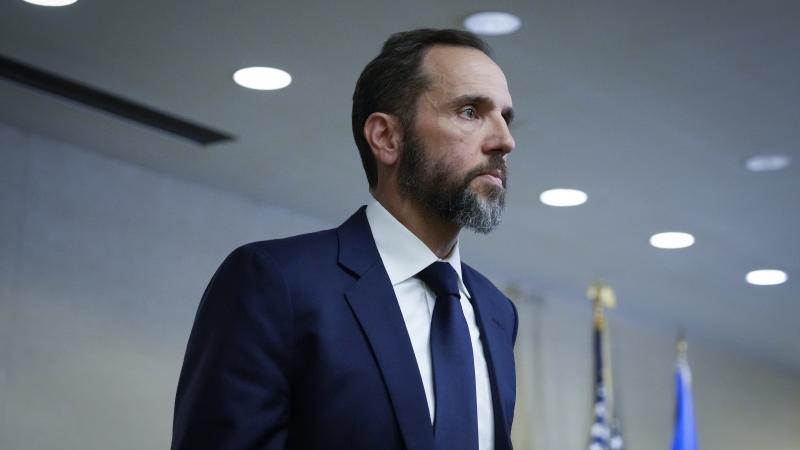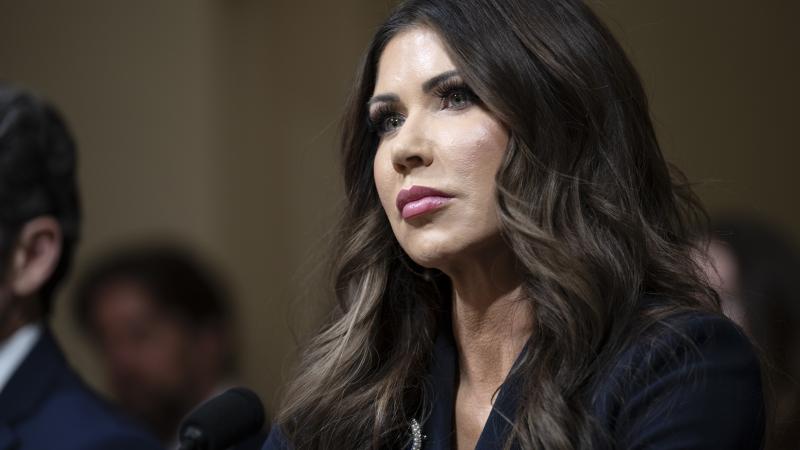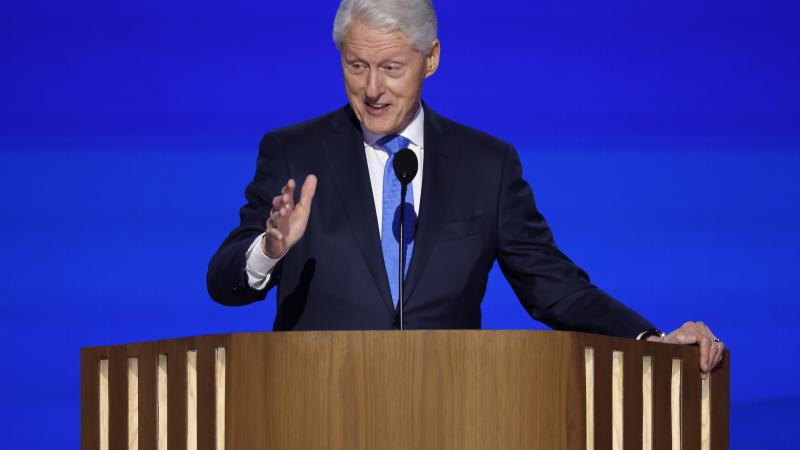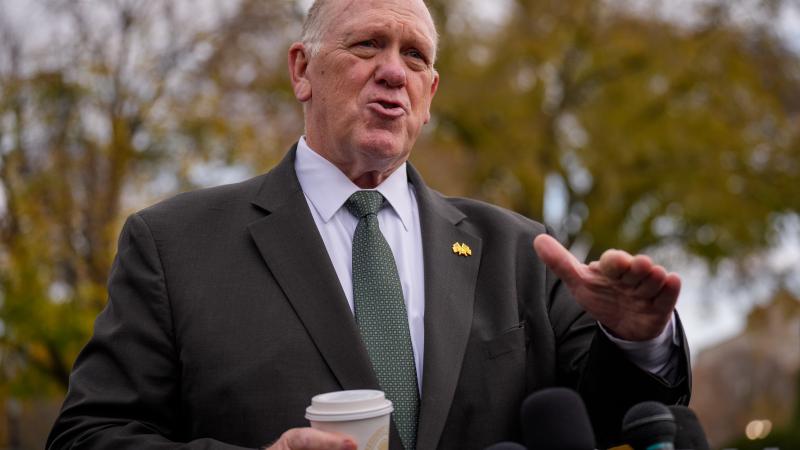Taxes and tariffs and trade: oh my! Trump’s plan to bolster the economy
“You know, for years they knocked the word 'tariff.' Properly used it’s a beautiful word, one of the most beautiful words I've ever heard music to my ears,” Trump said.
In a bid to build a broader coalition, former President Donald Trump has outlined a vision of tax cuts, import tariffs, and “reciprocal trade” to preserve and restore American industries.
Since coming down the escalator of Trump Tower in 2015, the Republican standard bearer has espoused unconventional trade policies and dragged much of the GOP kicking and screaming toward protectionism. His tenure saw the U.S. renegotiate trade agreements with its neighbors, resulting in the United States, Mexico, Canada Agreement (USMCA), while also waging a trade war with China seeking to curb some of Beijing’s abuses.
His signature tax plan, the 2017 Tax Cuts and Jobs Act, saw the doubling of the standard deduction and the reduction of the corporate tax rate to 21%. As he has sought to contrast himself with Harris, Trump has highlighted both elements of his economic plan and doubled down on the tax cuts and tariffs approach.
“So, as your president, here is the deal that I will be offering to every major company and manufacturer on Earth,” he said at a Tuesday event in Savannah, Ga. “I will give you the lowest taxes, the lowest energy costs, the lowest regulatory burden and free access to the best and biggest market on the planet, but only if you make your product here in America.”
“It all goes away if you don't make your product here and hire American workers for the job,” he warned.
His message, so far, appears to have resonated with working class voters, notably the traditionally Democratic-leaning union workers. After internal polling showed that its members decidedly favored Trump over Vice President Kamala Harris, the International Brotherhood of Teamsters declined to endorse a candidate, marking the first time in decades that the union had not backed a Democrat for president.
Tax cuts
In recent weeks, Trump has unveiled a litany of tax relief proposals, most of which involve either simplifying the system or eliminating taxation on certain sources of income entirely.
Speaking at a New York rally last week, Trump vowed to restore state-and-local-tax (SALT) deductions for federal tax returns in an about-face after signing the TCJA, which imposed a $10,000 cap on SALT deductions. "I will cut taxes for families, small businesses and workers, including restoring the SALT deduction, saving thousands of dollars for residents of New York, Pennsylvania, New Jersey, and other high cost states," he said.
Earlier this month, he pledged to eliminate all taxes on overtime work as well, saying “[t]he people who work overtime are among the hardest working citizens in our country … It's time for the working man and woman to finally catch a break.”
Trump has also promised to end taxation on Social Security benefits, a proposal that has drawn broad support from the public across most age brackets, according to recent polling.
Among the most notable of his campaign pitches, however, has been a pledge to eliminate taxes on tips, which he announced at a June rally in Nevada in a bid to win over service workers in the critical battleground.
Separate from pledging further tax cuts, he has also made the TCJA a central fixture of his campaign. Many of the act’s cuts are set to expire next year and he has begun to focus on the adverse impacts for taxpayers of permitting those cuts to sunset.
Using information from the Tax Foundation, the Trump campaign this month launched a website, dubbed kamalataxincrease.com, breaking down the average cost to tax-paying families by state. The site estimates that a Harris-proposed tax plan would cost families an average of $2,580.57 in additional taxes per year.
The TCJA lowered the corporate tax rate to 21%, but Trump vowed to go further in his Tuesday speech, promising a “manufacturing Renaissance” through a “15% Made in America tax rate.”
“We're cutting the business tax from 21% to 15% which makes us the most competitive tax anywhere on the planet, but only for those who make their product in the USA. See, that's an incentive,” he said. “[P]eople are going to be pouring in. Companies are going to be pouring in.”
Tariffs and trade
During his Savannah event, Trump vowed that foreign manufacturers would face a “very substantial tariff” in order to sell their products in the United States.
“If you don't make your product here, then you will have to pay a tariff, a very substantial tariff, when you send your product into the United States,” he said. Trump further noted that he previously encountered resistance to his tariff policies, but insisted that “tariff” is a “beautiful word” when “properly used.”
“This new American industrialism will create millions and millions of jobs, massively raise wages for American workers and make the United States into a manufacturing powerhouse like it used to be many years ago,” he promised. Trump also vowed a “100% tariff” on cars imported from Mexico and insisted “[w]e want American citizens, and we want their plants built here, not two feet over the border, and selling them into our country. We're not doing that.”
Apart from making tariff promises on his own, Trump has managed to instill the approach to international trade within the GOP rank-and-file and secure its place in the official platform. When the Republicans unveiled it in July, the party dedicated a chapter entirely to trade policy and committed to "rebalancing Trade, securing Strategic Independence, and revitalizing Manufacturing."
"Republicans will support baseline Tariffs on Foreign made goods, pass the Trump Reciprocal Trade Act, and respond to unfair Trading practices,” it continued.
The Trump Reciprocal Trade Act is a proposed bill empowering the president to match the import tariffs of a foreign nation should they impose any on American goods.
Shaking up the status quo
Prior to Trump’s overhaul of Republican trade and tariff policies, free trade orthodoxy dominated the GOP and tariffs were not a prominent part of either party’s platform. But Trump imposed several tariffs during his time in office, resulting in both a change in attitudes and a boost to federal revenues.
"Prior to President Trump’s first term in office, the United States was raising about $30 billion per year from tariffs on roughly one-quarter of all imported goods. Currently, tariffs raise about $100 billion per year on 30 percent of goods," the Committee for a Responsible Federal Budget wrote in 2023.
The CRFB’s assessment came in the wake of Trump’s proposal of a baseline 10% tariff on all U.S. imports that year. That proposal revealed lingering disagreements, even within the GOP, over free trade. That proposal drew rebuke from economic figures on both sides of the aisle at the time.
Former Trump Domestic Policy Council Deputy Director Paul Winfree, for example, told The Washington Post at the time that “[a] tariff of that scope and size would impose a massive tax on the folks who it intends to help.”
But Trump has brushed aside his detractors.
“You know, for years they knocked the word tariff. Properly used it’s a beautiful word, one of the most beautiful words I've ever heard music to my ears,” he said in Savannah. “A lot of bad people didn't like that word, but now they're finding out I was right, and we will take in hundreds of billions of dollars into our treasury and use that money to benefit the American citizens.”
The Facts Inside Our Reporter's Notebook
Links
- United States, Mexico, Canada Agreement
- Tuesday event in Savannah, Ga.
- International Brotherhood of Teamsters
- he said
- eliminate all taxes on overtime
- end taxation on Social Security benefits
- eliminate taxes on tips
- launched a website
- kamalataxincrease.com
- official platform
- Trump Reciprocal Trade Act
- Committee for a Responsible Federal Budget
- Paul Winfree
















